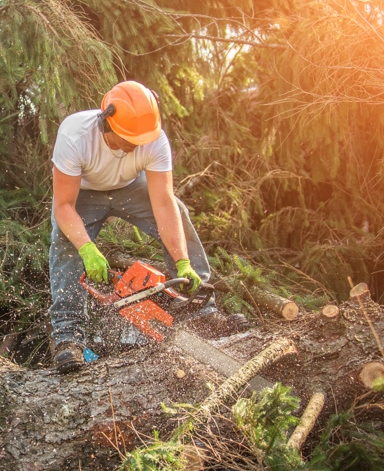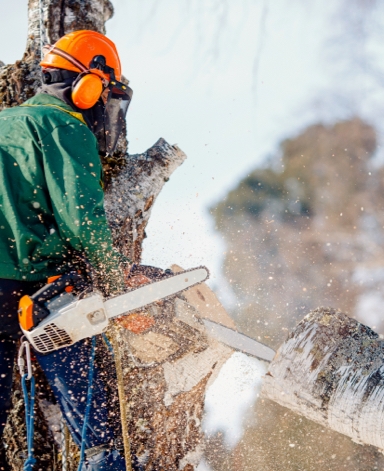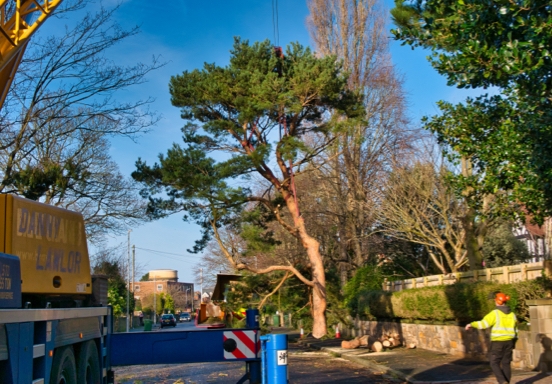WHAT IS POLLARDING
Pollarding is a tree pruning technique that involves removing the upper branches of a tree and reshaping the crown to a much smaller size.
This technique is often used to control the growth of trees that have outgrown their allotted space, or to provide a regular source of woody material for use as fuel or for other purposes. Pollarding is most commonly performed on young trees, but it can also be done on mature trees.
The process of pollarding involves cutting the tree back to a series of stubs or pollards, leaving only a few branches that will produce new growth. These branches are then trained to grow in specific directions to control the shape of the tree. Over time, the pollards will produce new growth that can be harvested for use as woody material.
One of the main advantages of pollarding is that it can be used to control the growth of a tree, allowing it to be maintained in a compact form. This makes it ideal for use in urban and suburban areas where space is limited. Pollarding can also be used to maintain the health of the tree, as it promotes strong and vigorous growth by removing older, weaker branches and allowing new growth to develop.
Another advantage of pollarding is that it is a sustainable and renewable resource. Unlike other tree pruning techniques, such as topping or de-limbing, pollarding does not cause permanent damage to the tree. Instead, it encourages the tree to regrow and produce new branches, which can be harvested and used for a variety of purposes.
It is important to note that pollarding is not a suitable pruning technique for all trees. Some trees, such as deciduous trees, are more suitable for pollarding than others, such as evergreen trees. Additionally, pollarding should only be performed by a professional arborist, as it requires specialized knowledge and skills to preserve the health and structure of the tree.
Pollarding should only be performed during the dormant season, when the tree is not actively growing. During the growing season, pollarding can cause the tree to produce even more growth, which can be difficult to control. Additionally, pollarding should be carried out in a controlled and gradual manner, taking into account the natural growth habit and shape of the tree.
In conclusion, pollarding is a tree pruning technique that involves removing the upper branches of a tree and reshaping the crown to a much smaller size. This technique is often used to control the growth of trees that have outgrown their allotted space, or to provide a regular source of woody material. Pollarding is best performed by a professional arborist during the dormant season, and should be carried out in a controlled and gradual manner to preserve the health and structure of the tree.


CONTACT US FOR EXPERT POLLARDING SERVICES
Get in Touch POLLARDING
FAQS
When should pollarding be done?
Pollarding should be done during the tree's dormant season, when it is not actively growing, typically during the late winter or early spring. This allows the tree to recover and regrow without the added stress of new growth. It is important to hire a professional arborist to assess the tree and determine the appropriate time and frequency of pollarding, as well as to properly carry out the pruning process to preserve the tree's health and structure. Over-pollarding should be avoided, as it can harm the tree's health and appearance.
How often can you pollard a tree?
The frequency of pollarding a tree depends on the species and growth rate of the tree. A professional arborist should assess the tree and determine the appropriate time and frequency of pollarding. Typically, pollarding is done every 3-5 years, but some species may require more or less frequent pollarding. Over-pollarding should be avoided, as it can harm the tree's health and appearance.
What is the height of pollarding?
The height of pollarding depends on the species and purpose of the tree. A professional arborist should assess the tree and determine the appropriate height of pollarding. Generally, pollarding cuts are made just above the tree's branching structure, leaving a series of stubs or pollards. The height of the pollards is determined by the desired size of the tree, the tree's growth rate, and the tree's overall health.
Does pollarding stop root growth?
No, pollarding does not stop root growth. The roots of a tree continue to grow and absorb water and nutrients from the soil, even if the tree's crown has been pollarded. Pollarding only affects the tree's above-ground growth by controlling its size and shape, but it does not affect the tree's root system. In fact, over-pollarding or improper pollarding can stress the tree and cause it to allocate more resources to its root system, potentially leading to increased root growth. It is important to hire a professional arborist to properly pollard a tree, as improper pollarding can harm the tree's health and stability.
